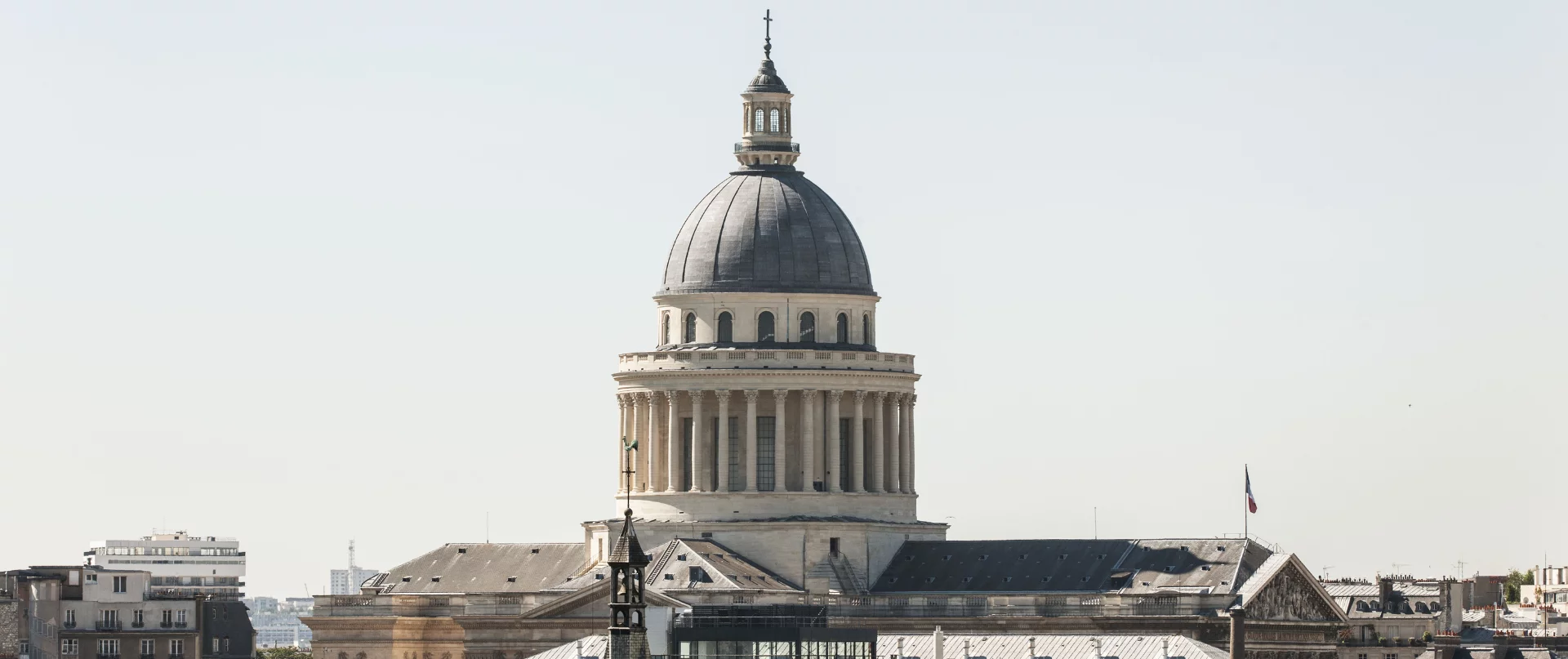History
article | Reading time10 min
History
article | Reading time10 min
In the heart of the Latin Quarter, in Paris, discover the history of the church Sainte-Geneviève, become with the liking of the political upheavals, the Panthéon, temple of the great men and great women of the nation.
In 1744, during the War of the Austrian Succession, Louis XV fell seriously ill in Metz and invoked the protection of Saint Genevieve, patron saint of Paris.
Miraculously recovered, the king went on a pilgrimage to the abbey located on Sainte-Geneviève mountain. He promised the monks the reconstruction of their ancient church, which had been dedicated to the patron saint of Paris and France for nearly a thousand years.
But everything was not so simple, the state coffers were empty. How to finance such a big project? A huge royal lottery was organized.
On September 6, 1764, nearly 20 years later, the first stone was laid by the king himself.
© Pascal Lemaître
Which architect was entrusted with such a project? The king chose Jacques-Germain Soufflot He was a young architect who was little known at the time. He hoped to compete with St. Peter's in Rome and St. Paul's in London.
For the church of Sainte-Geneviève, he opted for a Greek cross plan The church is topped bya triple dome. The structure of the building, its ambition and the choice of materials, earned him as much praise as criticism.
Unfortunately, he died before the end of the construction of the monument. His collaborator, Maximilien Brébion, and his student, Jean-Baptiste Rondelet, took over until the end of the project in 1790.
Did you know that? From 1790 to 1889 (when the Eiffel Tower was built) the Panthéon was the highest point in Paris!
© Reproduction Philippe Berthé / CMN
The church of Sainte-Geneviève, which became the Panthéon during the Revolution, oscillated between these two functions throughout the 19th century. With the changes of political regimes, the function of the building has evolved no less than 6 times.
Built as a sanctuary to the glory of the patron saint of Paris, the building underwent a first change during the Revolution. While the church was barely completed, the building became, following the death of Mirabeau in 1791, a national necropolis reserved for the worship of illustrious men.
Voltaire and Rousseau entered the Panthéon in 1791 and 1794 respectively. Shortly after, in 1806, Napoleon Bonaparte returned the building to the Catholic Church, but kept the crypt for the burial of Empire dignitaries.
In 1815, under the Restoration In 1815, during the Restoration, the monument became a church again, before resuming its function as a Panthéon in 1830, under the July Monarchy.
Named Temple of Humanity in 1848, under the Second Republic, the building became a church again with the advent of the Second Empire, in December 1851.
It was not until the funeral of Victor Hugo, in 1885, under the Third Republic, that the monument definitively kept its role of Panthéon.
© Jean-Jacques Hautefeuille
Since 1791, successive "Pantheonizations" have placed the building in the French and international news. The most recent is that of Missak Manouchian in February 2024.
Well present in the collective imagination, the Panthéon is best known for its most famous personalities such as Victor Hugo and Voltaire, Marie Curie or Jean Moulin... But can you name all its residents? How many? Do you know the reasons for their entry?
Find out the stories linked to these great names, and come and (re)discover the last resting place of the great French men and women!
© Thomas Thibaut / Centre des monuments nationaux
Mostly installed in the nave of the monument and on the main facade, the works of art present an impressive diversity: bas-reliefs, marouflaged canvases It can be used on frescoes, sculpted groups, tapestries, windows...
From 1874, a decorative program illustrating the story of Saint Genevieve and the epic of the Christian and monarchic origins of France adorns the monument.
In 2020, two contemporary artists, Anselm Kieffer and Pascal Dusapin, created works for the Panthéon, as if to anchor the building in its century.
© Hervé Lewandowski / Centre des monuments nationaux
Heir to history, the Panthéon is constantly evolving. A rich and varied program is offered: readings and lectures, shows, family visits, evening events, school workshops, etc... the monument also hosts a major exhibition each year. There is something for everyone!
© Hervé Lewandowski / Centre des monuments nationaux







